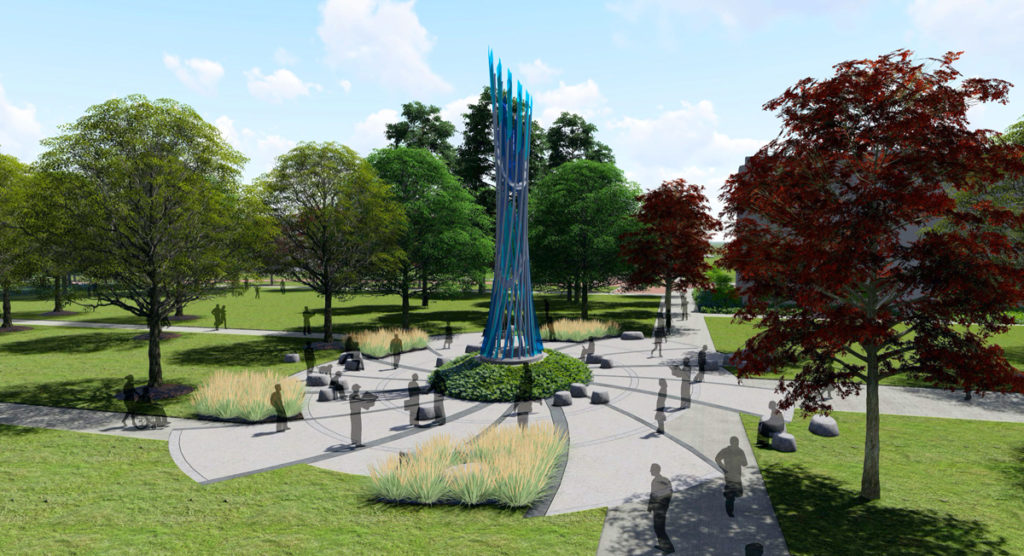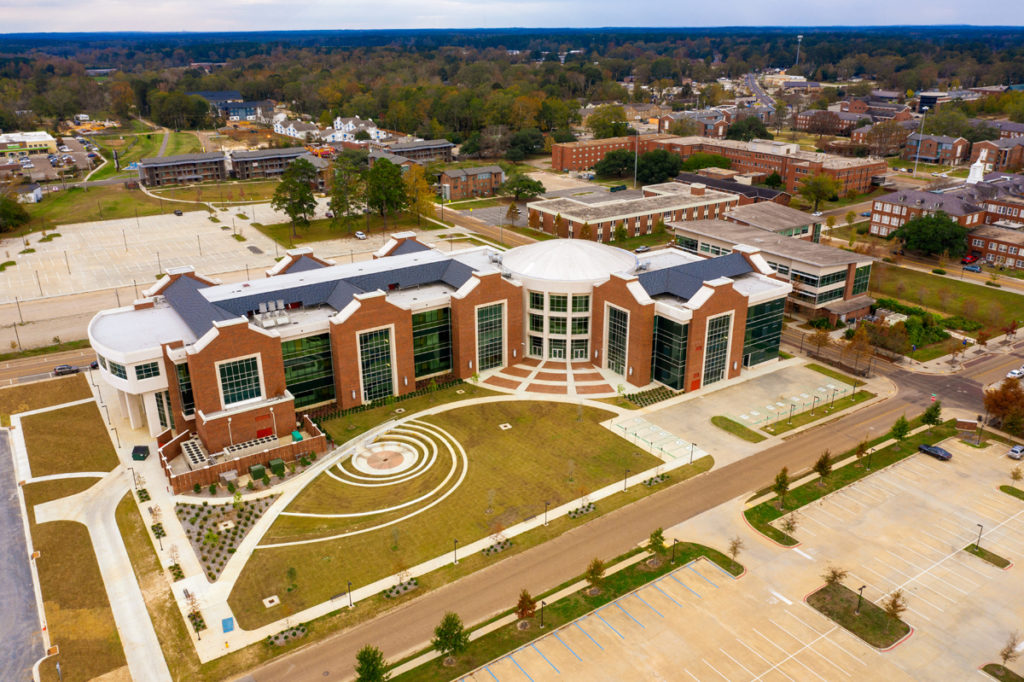In the center of a new grove of noble oak trees between Keeny Hall and the College of Business, an inspiring new piece of art is planned that will honor the spirit of transformation and innovation that is a core part of Louisiana Tech University.
Artist Curtis Pittman of Portland, Oregon, is in the process of creating a sculpture named Aspire for a space on campus that has undergone significant transformation in the past year. The installation will sit in a “campus confluence that is the perfect location for an iconic work of art designed specifically to make dramatic improvements within an urban environment by building a stronger community, socially, spiritually, and intellectually.”
Aspire is designed to be the newest addition to Louisiana Tech’s 21st Century Campus and a perfect accompaniment to the new trees planted at the beginning of the Forever Loyal Campaign. These noble trees were planted with assistance from many across campus and beyond who are invested in the natural beauty of the campus.

“We started this portion of our 21st Century Campus project with the goal of creating art and intentionally designed landscaping features across campus that would enhance the educational experience and mental and physical health of our students, faculty, staff, and anyone who visits this beautiful campus,” said Dr. Les Guice, Louisiana Tech President.
“Thanks to the leadership gift of Tim and Elaine Petrus, matching funds provided by the Argent Financial Group, and so many alumni, faculty, staff, students, and friends, we were able to start with a significant investment in the living portion of that landscape. Now, we are investing in art that will inspire us all and help preserve the meaning of our alma mater, with its pleasant walks and noble trees phrase, for future generations.”
Buildings constructed with more than $2 million in public funds in the state of Louisiana must be a part of the Percent for Art program, which requires 1 percent of the construction cost be reserved “to acquire, conserve, or restore and install works of art for display in, on, or on the grounds of the state building.” Louisiana Tech reserved a portion of the costs from the construction at the College of Business Building, Tech Pointe, and the Integrated Engineering and Science Building (IESB) as well as the renovation of University Hall to fund the creation of a sculpture that is worthy of the vision for the University’s next 125 years.
Aspire will be visible from throughout campus both day and night. The 45-foot-tall sculpture installation will stand at the intersection of the University’s historic campus core and the Enterprise Campus.
“It was important to the University that Aspire be both an aspirational totem, as well as a symbol of celebration toward increased inclusivity in higher education,” the artist’s statement said. “At a time where inclusion, diversity, and equity provide the answers to a stronger future for the city, state, and nation, Louisiana Tech is determined to lead by example during this historic movement. The art will serve to invigorate the urban experience, while bringing diverse parts of the campus and surrounding City of Ruston together. A harmonious relationship is created between the art, the landscape, and the people. Not only will the artwork improve the urban condition, but it will also serve as a permanent symbol for humanity.”
The installation will be aligned along the east-west axis that passes through the Keeny cupola, the College of Business Building, and the Lady of the Mist. In fact, the Lady inspired Pittman to create a sculpture that is reminiscent of the Lady’s fountain.
“Aspire represents a convergence of the disciplines and people who foster creativity, innovation, entrepreneurship, and partnerships in interdisciplinary and collaborative environments,” Guice said. “I believe the installation and plaza will become another treasured campus landmark.”
Throughout 2020, Louisiana Tech has undergone a number of changes designed to increase green space and create a more walkable campus for students, faculty, staff, and members of the community.
Harper and Harris halls were razed to create green space near the alumni walkway and Tolliver Hall, and College Street between Keeny and the College of Business was closed to create accessible sidewalks and more green space for students to gather between classes or for events.
In planning the green spaces, campus leaders got help from Forestry faculty members who helped determine which trees are best suited for the area. Landscaping throughout the Enterprise Campus is also designed to create attractive places for rain water runoff, such as the area behind Tech Pointe and the amphitheater near the IESB.

“Part of our campus master plan was that we wanted to have attractive and purposeful areas to carry away excess rain water,” said Sam Wallace, Associate Vice President for Administration and Facilities. “For instance, the amphitheater serves two purposes – of course as a relaxation and study area for our campus, and as a water detention area so that excess rain can flow slowly into the wastewater system.”
Within the next year, Wallace added, the campus will also see better lighting and sidewalks along several city streets in order to create a more accessible city and campus.

[…] The gateways to the University are being improved, but there’s also an ongoing re-invention of the campus interior, illustrated by more accessible walkways, more Noble Trees, lots of breathable green space, and the biggest (and newest) lighted art in Lincoln Parish, Aspire, a sculpture designed to evoke the power and inclusivity of higher education. […]